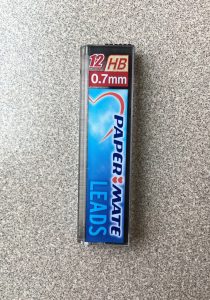
Front Cover of Mechanical Pencil Lead Case
This is a photo of the cover of the pencil lead case, which includes the Paper Mate logo, two small hearts, a larger fading heart, “LEADS,” and information about the lead (“12,” “HB,” “0.7mm), all on a background of a blue cloudy sky. The majority of the case is made of a clear plastic.
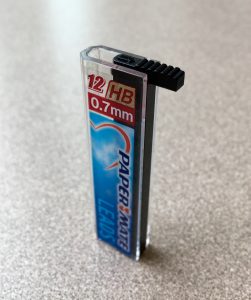
Mechanical Pencil Lead Plastic Case
The case measures .75 in. x 3.75 in. x .25 in. The top of the case has an opaque black plastic contraption designed for the individual using the case to slide half of the top open (as indicated by an arrow), so that the pencil lead can be taken out.
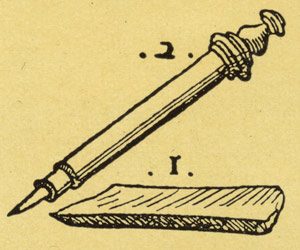
First image of a mechanical pencil with replaceable graphite
This 1567 illustration depicts one of the first “leadholders” or mechanical pencils, which includes a wooden stick (2) that holds replaceable graphite (1). This image demonstrates the surprising similarities in innovation between very different time periods.

A student using a mechanical pencil to work on math problems at the library
This photo portrays a student using a mechanical pencil. This individual is someone who I suspect is similar to the previous owner of this empty pencil case because (according to my research) plastic mechanical pencils were designed to be more convenient for school and everyday use.
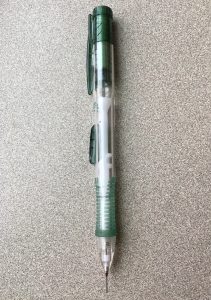
A mechanical pencil that is likely similar to one that the lead from the empty case was used in
This is a mechanical pencil that is likely similar to one that the lead from the empty case was used in. The case itself has no purpose without the lead that was in it, and that lead has no purpose without the mechanical pencil it is inserted into; so, when considering the value of the case, I must look at other secondary objects, like this mechanical pencil, to understand the purpose of the primary object.
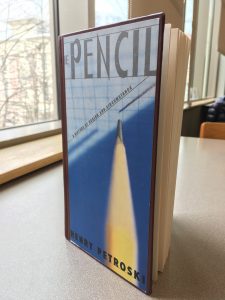
The Pencil: A History of Design and Circumstance by Henry Petroksi
One of the most useful resources for this project was “The Pencil: A History of Design and Circumstance,” by Henry Petroski, where the author traces the history of the pencil and writes about the development of the pencil over time. He discusses the function of the pencil as a form of technology in our society, which helped me to recognize the role the pencil has played in the past so that I can better understand the role of my object today.